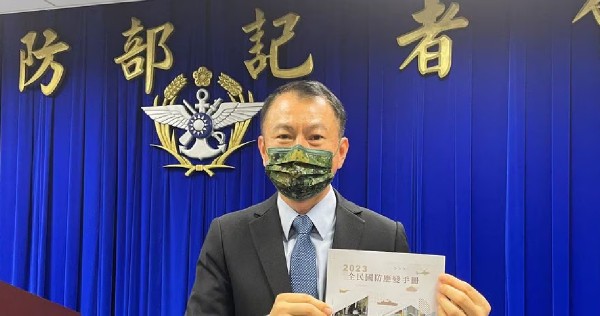TAIPEI – Taiwan’s military released an updated civil defence handbook on Tuesday (June 13) that for the first time includes a section on how to tell the difference between Chinese and Taiwanese soldiers based on their uniforms, camouflage and insignia.
Taiwan unveiled the handbook last year amid a rise in tensions with Beijing and after Russia’s invasion of Ukraine, detailing how to find bomb shelters, water and food supplies via smartphone apps, as well as tips for preparing emergency first aid kits.
Taiwan’s defence ministry said they received feedback that the book needed to better reflect war scenarios, given the conflict in Ukraine, which Russia calls a “special operation”.
One of the changes includes illustrations of Taiwanese service personnel and “enemy soldiers” wearing Chinese military uniforms.
The Taiwanese soldiers are shown smiling, whereas the Chinese ones have downturned mouths and a severe expression.
“It’s actually quite hard to distinguish them,” All-Out Defence Mobilisation Agency Director Shen Wei-chih told reporters at the defence ministry.
The booklet assumes Chinese soldiers will wear People’s Liberation Army uniforms; experts say special forces troops may wear different gear as they try to infiltrate Taiwan during an invasion.
Taiwan’s emergency personnel, including police and first responders, are also shown in the new handbook, which will be available for download.
The agency is working on an English translation, Shen said.
Planning for the handbook predates Russia’s attack on its neighbour, which has prompted debate on its implications for Taiwan and ways to boost preparedness, such as reforms to the reservist training and extending military service.
China views democratically governed Taiwan as its own territory despite Taipei’s strong objections and has ramped up military and political pressure over the past three years to push those sovereignty claims.
Taiwan has also been inspecting bomb shelters to make sure they are suitable and updating signs to make them easier to find; markers may eventually include flashing lights, officials said at the same news conference.
This article was first published in Asia One . All contents and images are copyright to their respective owners and sources.











